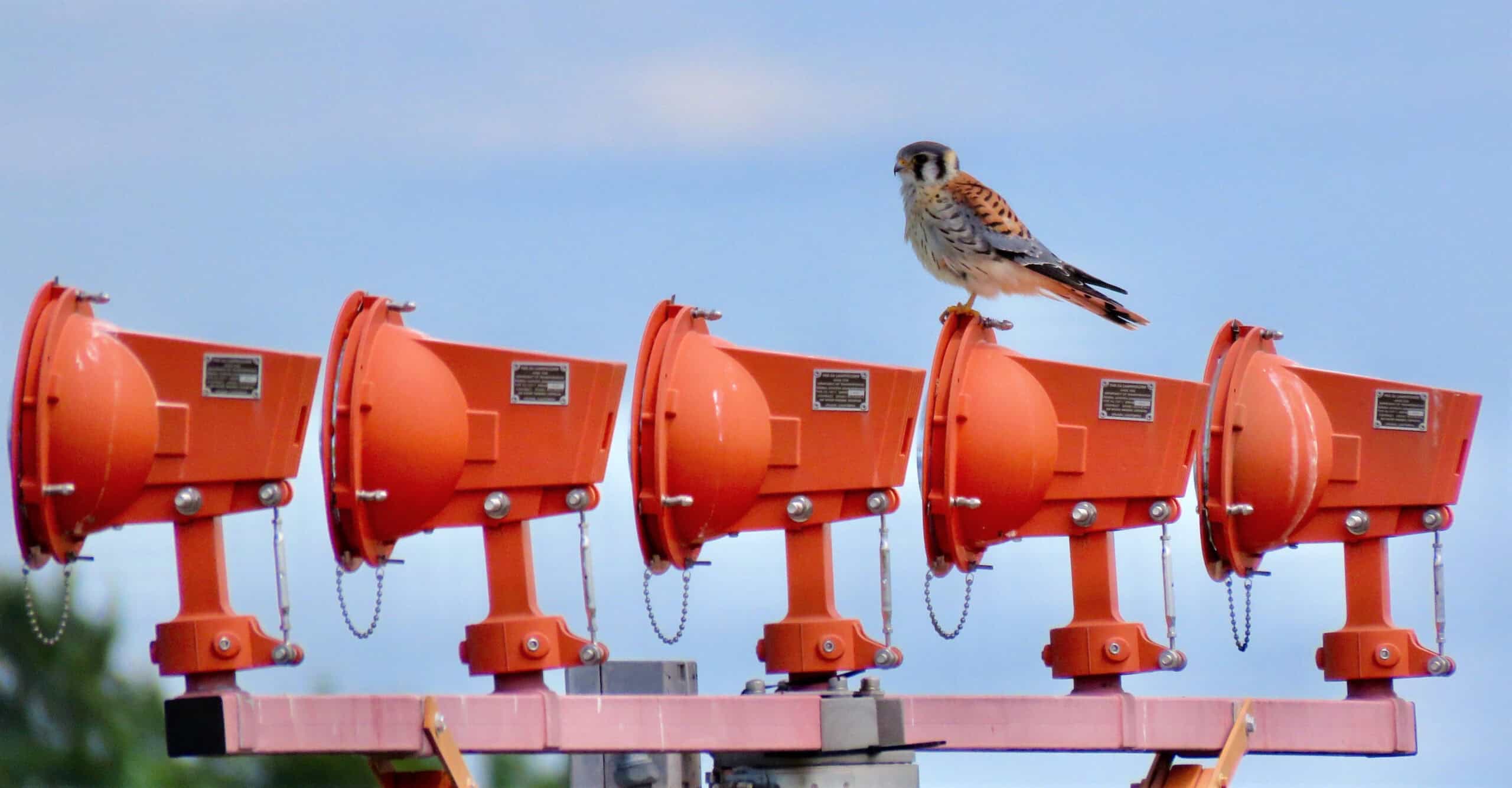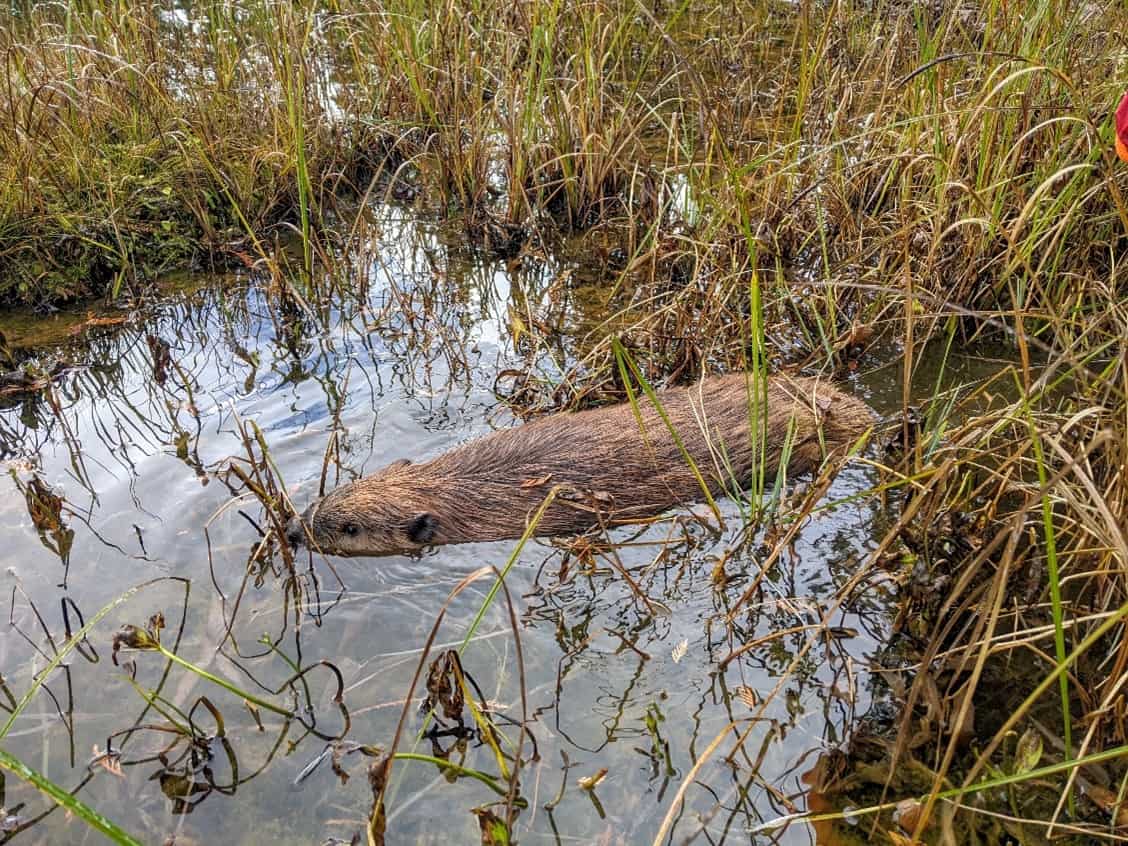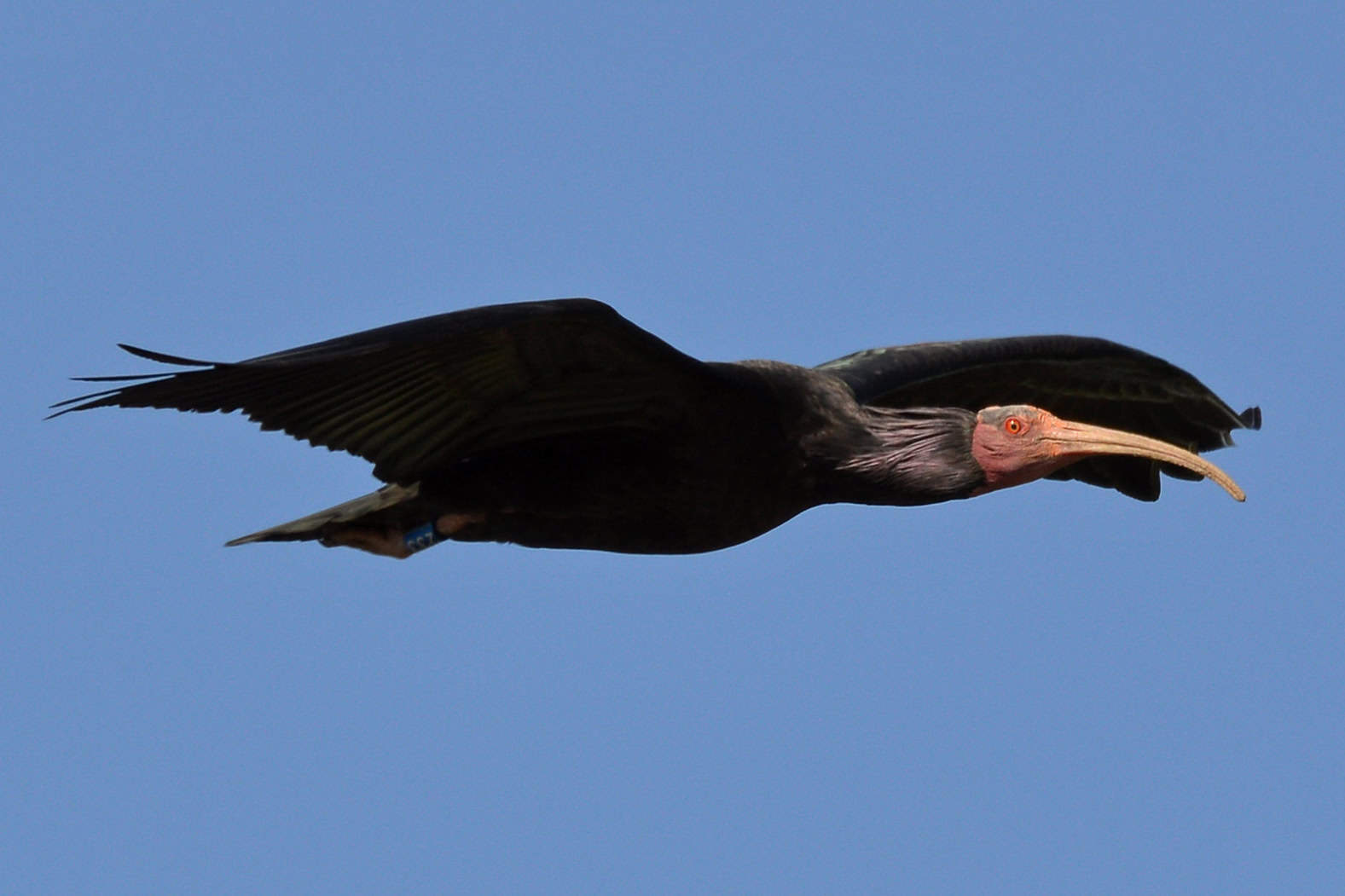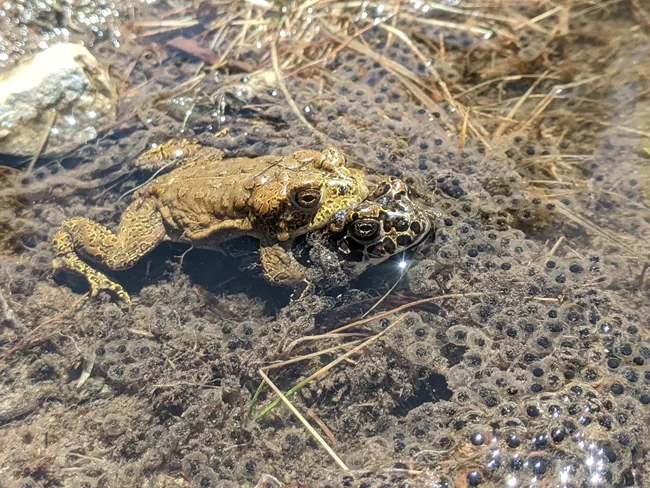Share this article
Wildlife Featured in this article
- American kestrel
- Red-tailed hawk
- Great horned owl
- Cooper's hawk
WSB: To save kestrels from airstrikes, translocate them
Moving the small raptors 15 miles away from airports was usually enough to ensure they don’t return to dangerous areas
Translocating kestrels away from airports seems to keep most of them away, which means fewer aircraft strikes.
“We’re excited about the findings,” said TWS member Brian Washburn, a research wildlife biologist with the Animal and Plant Health Inspection Service’s Wildlife Services at the U.S. Department of Agriculture.
The large, flat areas of airports attract prey species like rodents and large insects, which draws in a number of bird species. Not only can bird strikes damage aircraft, but they are almost always lethal for the birds. As a result, wildlife managers often remove species from airports and translocate them to safer areas.
Washburn and his colleagues have studied how raptors like red-tailed hawks (Buteo jamaicensis), great horned owls (Bubo virginianus) and Cooper’s hawks (Accipiter cooperii) respond to translocations. Each of these species reacted differently—some were more likely than others to return to the airports they were removed from.
But until recently, nobody had looked at how American kestrels (Falco sparverius)—a species that has been declining in the U.S.—responded to removal from airports and translocation.
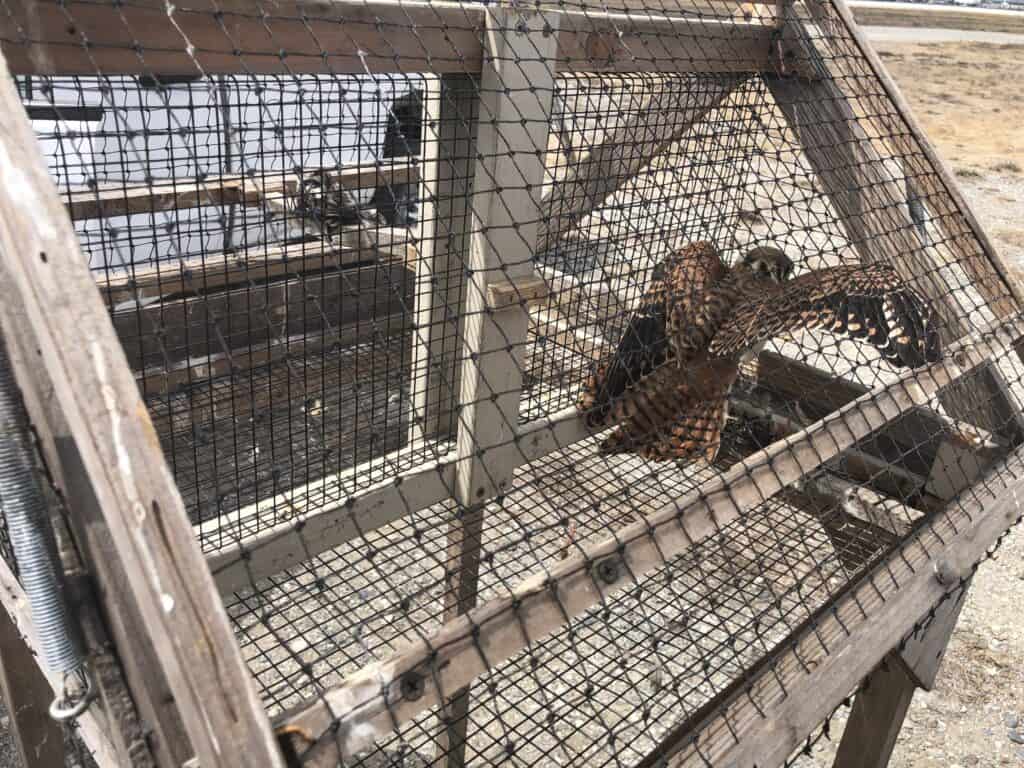
Translocation records
In a study published recently in Wildlife Society Bulletin, Washburn and his colleagues examined records of 2,005 kestrel removals from 42 civil and military airports across 14 states from 2015 to 2021. More than 50 airport biologists and technicians translocated the kestrels and later monitored them to see if they returned. Leg bands helped the researchers monitor them after translocations
The team divided the birds into four different groups—those moved 15, 30, 45, and 60 miles away from airports—since they wanted to narrow down the most effective distance for translocation to ensure the bird didn’t return.
The wildlife managers also recorded other factors during translocations, such as the age and sex of the birds and the month they were moved. In previous work on red-tailed hawks, the researchers had seen that older birds were more likely to return to airports after translocation than younger birds, for example.
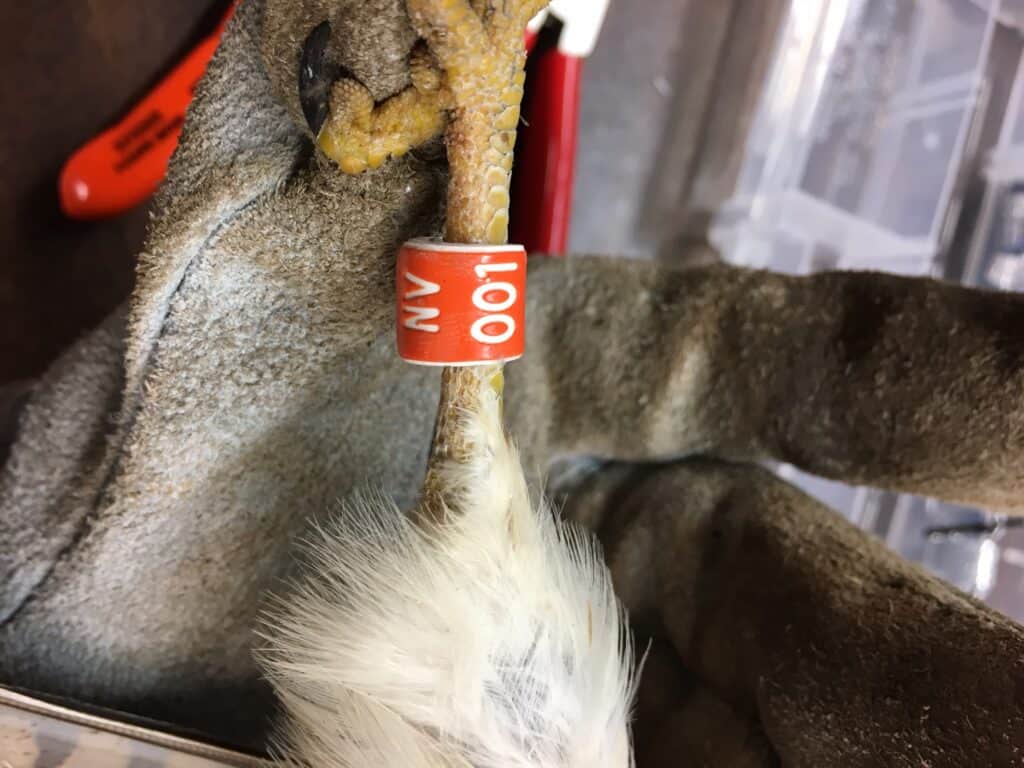
Don’t ya come back
Monitoring and carcass analysis at airports revealed that regardless of the distance translocated, only about 5% of kestrels returned to the airport they were removed from—good news for the wildlife managers working on this project. “Very few came back,” Washburn said.
For those that did come back, the vast majority returned within a month. Only a handful returned to the airport they had been moved from after a subsequent migration season.
This result was much better than Washburn and colleagues had seen for red-tailed hawks, which had a 25% rate of return overall.
The researchers didn’t uncover any trends in terms of distance translocated. That suggests that in the future, wildlife biologists likely don’t need to drive great distances to translocate individuals, saving time and money.
“You only need to take them 15 miles away—you don’t need to take them very far,” Washburn said.
The researchers also didn’t find any trends in terms of sex or age among kestrels—old, young, male and female birds all returned at the same rate. The month the removal occurred didn’t seem to matter much, either.
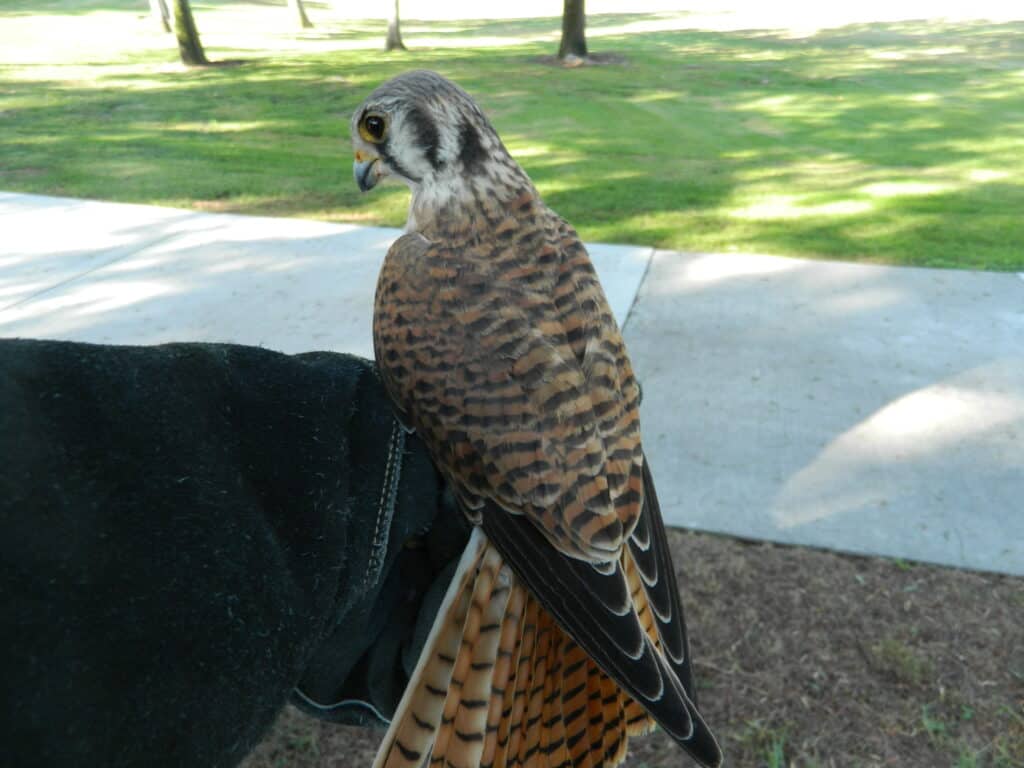
Repeat offenders
What did seem to make a difference was individual variability. As part of their study, the biologists also recaptured, and retranslocated, a number of birds that had already been moved once. These birds typically had a much higher rate of being repeat offenders—40% of those that returned to their airport of origin once subsequently returned again.
Washburn said that this finding matches what they discovered with red-tailed hawks. “If the bird’s coming back, it really wants to be there,” he said. “No matter how many times you take it, it’s probably coming back.”
In future work, Washburn hopes to track the outcome of translocated birds that don’t return to airports. This will allow them to determine survival rates for translocated kestrels as well as whether they establish new territories after being moved. But studying this is currently difficult to do with GPS tracking devices, which may be large enough to track larger raptors but not the diminutive kestrels.
For now, this study reveals that translocation can be an effective management technique for kestrels at airports.
“It’s close to a completely nonlethal program,” Washburn said.
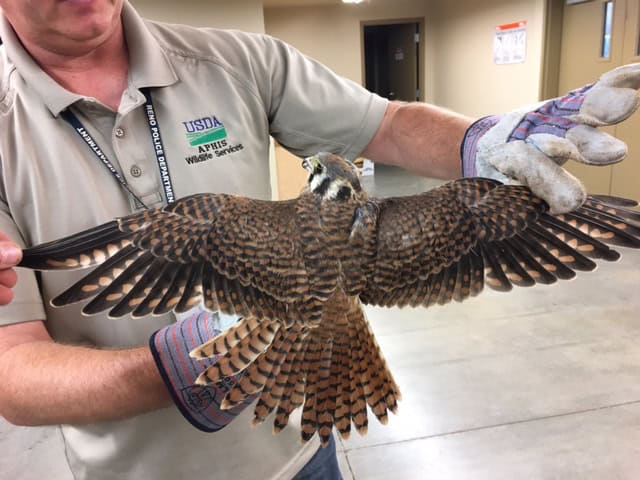
This article features research that was published in a TWS peer-reviewed journal. Individual online access to all TWS journal articles is a benefit of membership. Join TWS now to read the latest in wildlife research.
Header Image: A kestrel sits on airplane approach lights at the St. Louis Lambert International Airport. Credit: USDA Wildlife Services/Alec Sonnek



